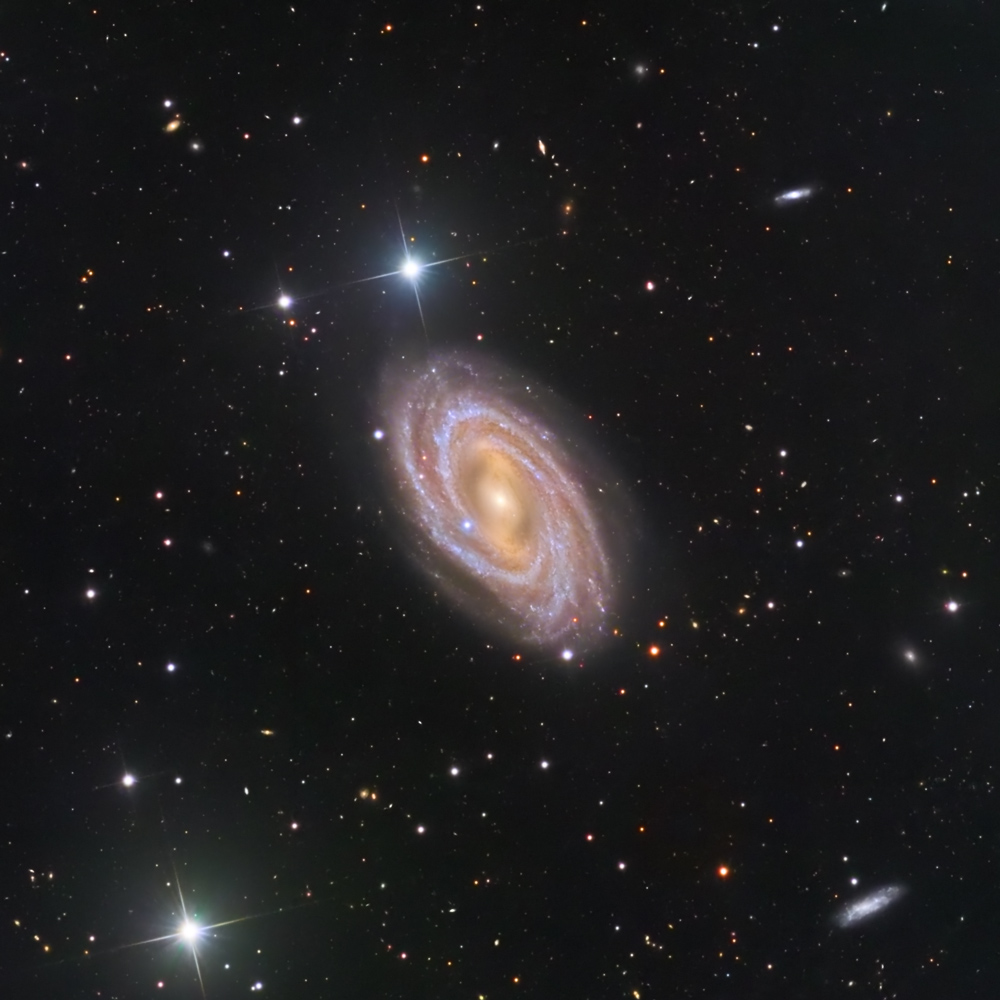
Messier 109 is a very large barred spiral galaxy, located very near one of the bright stars in the bowl part of the Big Dipper (the source of the blue glow in the left of the uncropped
image). M109 is estimated to be about 83 million light years away from us; at that distance, it is about 175,000 light years in diameter (somewhat larger than our Milky Way, itself a large galaxy). It is
thought to contain a trillion (that's a thousand billion; or a million million) stars! Because of its great distance from us, it covers a very small patch of the sky--only 7.6 arcminutes in diameter (by
comparison, a full moon is about 30 arcminutes in diameter). For comparison, M33 is a bright, splashy galxy in our local group of galaxies; in my
linked photo, it appears very large and bright. But that's because it's only 2.7 million light years away (3.2% as far as M109); in fact, it is about 1/3 the diameter of M109, with about 4% as many stars
as has M109.
As usual in a deep-sky image, there are a lot of small (meaning distant) galaxies in the uncropped versions of the image (look for the oblong and/or fuzzy "stars"). Unusually, there are several fairly
large "small" galaxies in the background of this image. In particular, to the right of the M109 are three significant (in apparent size) galaxies, UGC 6969, UGC 6940 and UGC 6923 (from bottom to top;
only the first two in the cropped version now displaying). It is thought that these three may be satellite galaxies of M109.
Copyright 2022 Mark de Regt